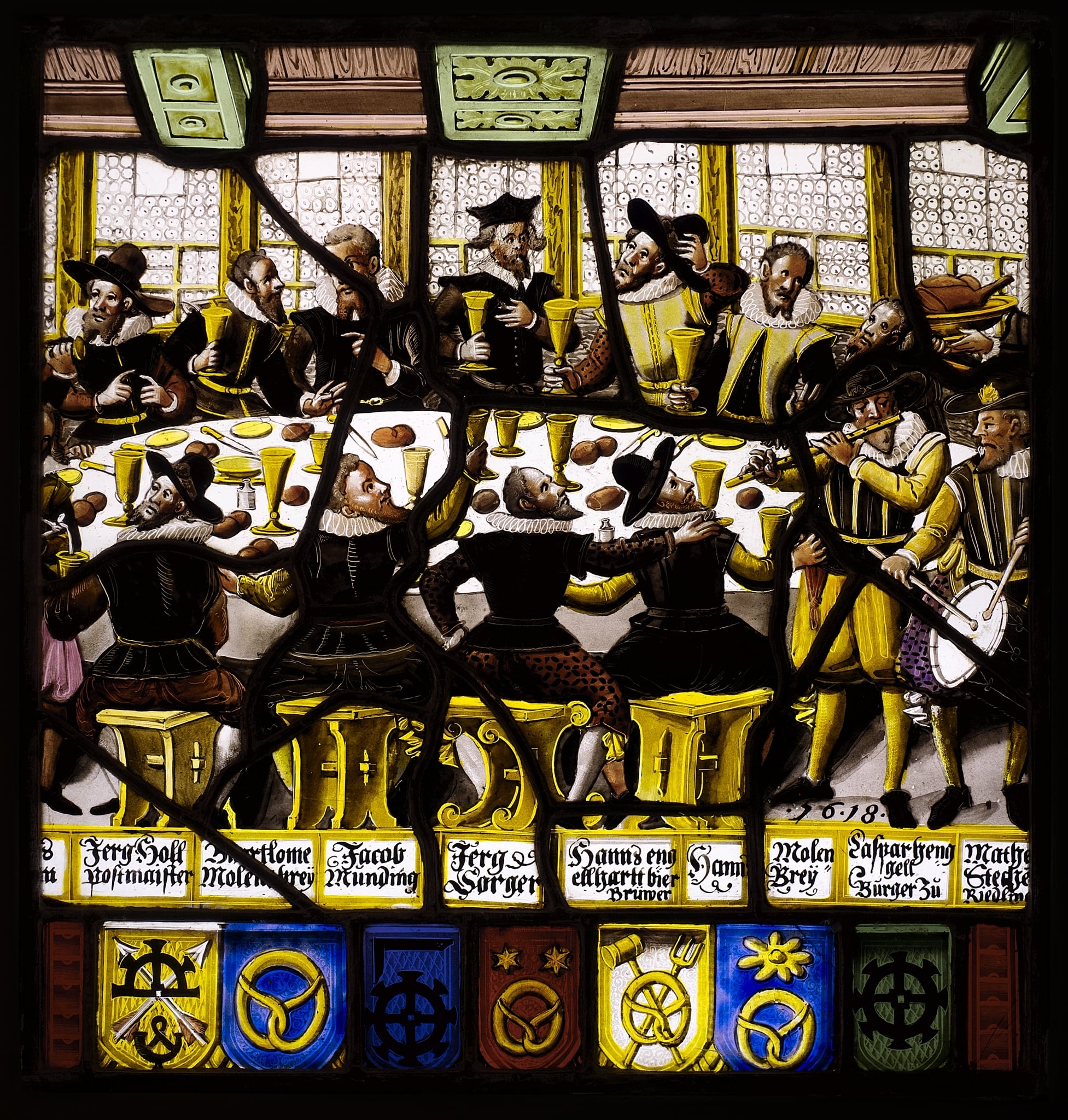A group of men gather at a round table in a tavern; twelve are still visible in the truncated panel. They wear black doublets with white ruffled collars. All have tall drinking vessels depicted in yellow, like the plates on the table. They also sit on yellow stools. The viewer’s attention is drawn to the standing guild master and figure beside him, who removes his hat to pay his respects. Although the panel has been trimmed, we can still observe servers at the sides bringing meat and drink. A man playing the fife and another playing the drum stand in the right foreground. The men at table are engaged in animated conversation; they turn to each other, raise their cups, or salute the musicians. The room is glazed with bulls' eye windows and the wooden ceiling is carved with sculpted cross-beams that are painted green. Below the scene, is a row of inscriptions and below that coats of arms bringing additional color to the panel.
Since the panel has been cut down and the inscriptions do not align precisely with the arms, identification of the individuals is problematic.
1. Or two arrows per saltire proper surmounted by in chief a demi-mill wheel sable in base a hunting horn of the same
2. Azure a pretzel or
3. Purpure in chief a carpenters’ square or and in base a mill wheel sable
4. Gules in chief two stars or six points or in base a pretzel of the same
5. Argent a brewers’ malt scoop and brewers’ stirring paddle in saltire or a pretzel overall
6. Azure in chief a daisy or in base a pretzel of the same
7. Vert a mill wheel sable
1. [ . . . ]s/ [ . . . m]
2. Jerg Holl/ postmaister
3. Bartlome/ MolenBreÿ
4. Jacob/ Munding
5. Jerg/ Sorger
6. Hanns eng/ ellhartt bier/Brüwer
7. Hann [ . ] Molen Breÿ
8. Casper heng/ gell/ Burger Zu / Riedlen
9. Mathe [ . . . ]/ Stech[ . . . ]
1618 (in scene lower right)
none
